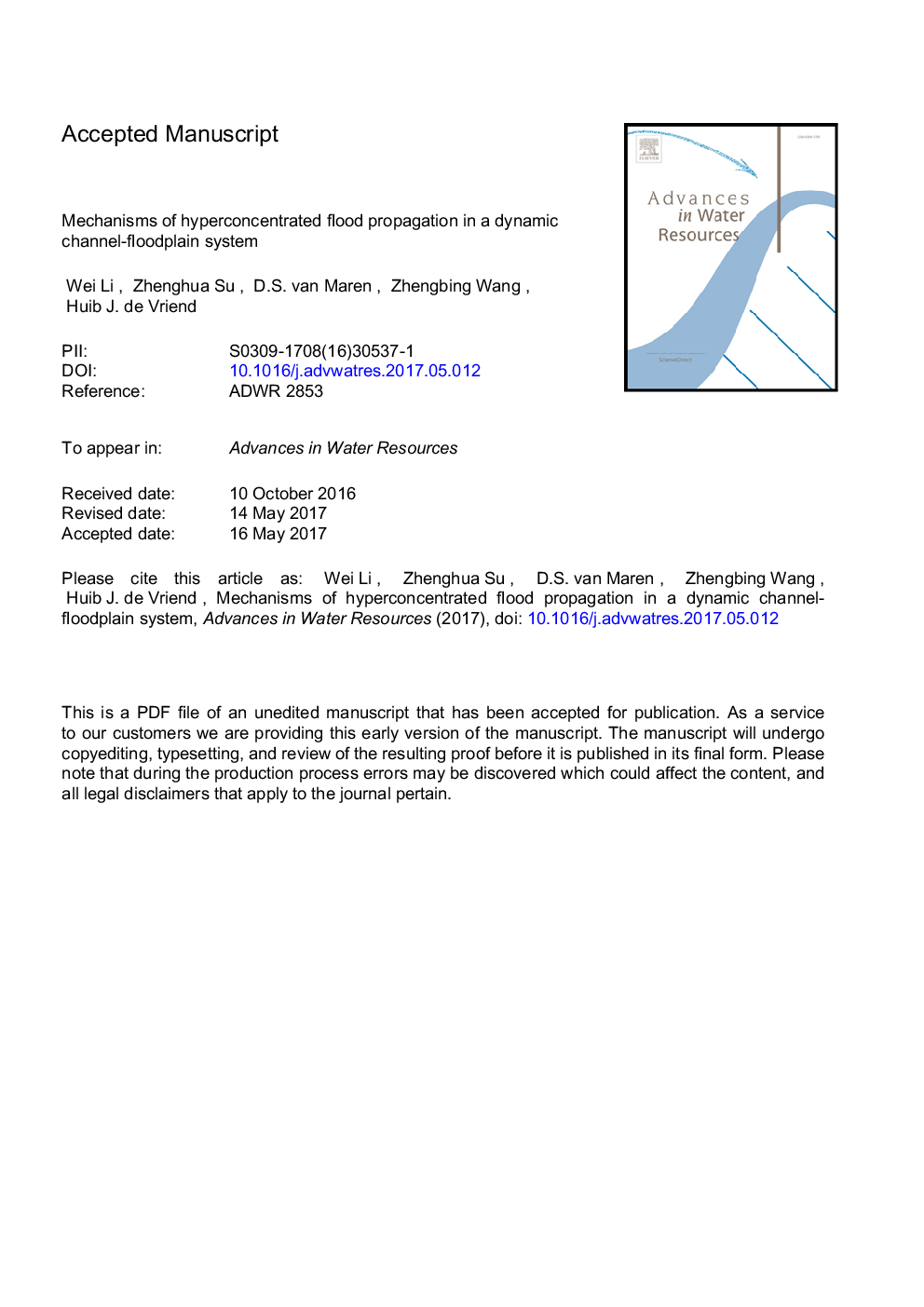| کد مقاله | کد نشریه | سال انتشار | مقاله انگلیسی | نسخه تمام متن |
|---|---|---|---|---|
| 5763758 | 1625604 | 2017 | 47 صفحه PDF | دانلود رایگان |
عنوان انگلیسی مقاله ISI
Mechanisms of hyperconcentrated flood propagation in a dynamic channel-floodplain system
ترجمه فارسی عنوان
مکانیسم انتشار سیلاب های بیش از حد کنسانتره در یک سیستم پویا کانال سیلاب
دانلود مقاله + سفارش ترجمه
دانلود مقاله ISI انگلیسی
رایگان برای ایرانیان
کلمات کلیدی
سیل بیش از حد کنجکاو، اثرات سیلاب، سیستم کانال-سیلاب مدل مورفودینامیکی همراه تخلیه قله، رودخانه زرد،
ترجمه چکیده
افزایش میزان انبساط پائین در طول سیلاب های پرآشده در رودخانه زرد به فرسایش، کاهش زبری و اثرات سیلاب بستگی دارد. در حالیکه پیشرفتهای زیادی در درک نقش نقش فرسایش و کاهش زبری وجود دارد، اثرات سیلاب هنوز درک نشده است. در اینجا، به عنوان اولین گام برای نشان دادن اثرات سیلاب، ما یک مطالعه تجربی عددی در مورد چگونگی واکنش سیستم کانال سیلاب به یک فرآیند سیلاب بیش از حد کنجکاوی ارائه می دهیم. برای این منظور سیستم های کانال سیلاب طرح ریزی شده و داده های کلاسیک سیلاب سال 1992 در مرز بالادست تجویز می شود. با استفاده از یک مدل مورفودینامیکی کاملا متصل شده، آزمایش های عددی برای تحلیل جامع در مورد اثرات فرسایش پذیری بستر، عرض سیلاب، تغییرات زبری رطوبتی، تقارن و تغییر طولی ژئومورفولوژی انجام شده است. نتایج ما نشان می دهد دو رونق متمایز برای پاسخ سیستم کانال - سیلاب بسته به فرسایش پذیری تخت. برای فرسایش پذیری بستر کوچک، هر دو فرسایش کانال و سیلاب تجربه می کنند. برای فرسایش پذیری تخت متوسط / بزرگ، فقط کانال فرسایش را تجربه می کند در حالیکه رسوب در سیلاب رخ می دهد. تغییرات عرض سیلاب بر رفتارهای تخریب فرسایش تاثیر نمی گذارد در حالیکه تغییر اندازه و الگوهای رسوب سیلاب تغییر می کند. کانال سیلاب دائمی قطع شده به وسیله هر یک از مناطق ذخیره سازی آب یا بانک های مسکن / کشاورزی تقسیم بندی سیلاب را در مکان های متداول کاهش می دهد. در حال حاضر آزمایش های عددی نشان می دهد افزایش دیررس ناگهانی پدیده آشکار نیست، با این وجود ویژگی های تخریب شناخته شده فرسایش، به بررسی بیشتر اثرات سیلاب در پیک سیلاب های بسیار زیاد می انجامد.
موضوعات مرتبط
مهندسی و علوم پایه
علوم زمین و سیارات
فرآیندهای سطح زمین
چکیده انگلیسی
The downstream peak discharge increase during hyperconcentrated floods in the Yellow River has been attributed to bed erosion, roughness reduction and floodplain effects. While great improvements have been made on the understandings of the roles of bed erosion and roughness reduction, the effects of floodplain remain poorly understood. Here, as a first step to reveal the floodplain effects, we present a numerical experimental study on how the channel-floodplain system reacts to a hyperconcentrated flood process. For this purpose, schematized channel-floodplain systems are designed and the classical 1992 flood record data is prescribed at the upstream boundary. By applying a fully coupled morphodynamic model, numerical experiments are conducted for a comprehensive analysis on the effects of bed erodibility, floodplain width, bed roughness variation, symmetry and longitudinal variability of geomorphology. Our results show two distinct trends for the response of channel- floodplain system depending on bed erodibility. For a small bed erodibility, both channel and floodplain experience erosion. For a moderate/large bed erodibility, only the channel experiences erosion whereas deposition occurs on the floodplain. The variation of the floodplain width does not affect these erosion-deposition behaviors while changing the magnitude and patterns of floodplain deposition. The longitudinally discontinuous channel-floodplain divided by either water storage areas or housing/farming banks diminishes the floodplain deposition at the discontinuous locations. The present numerical experiments do not show an obvious peak discharge increase, nonetheless, the recognized erosion-deposition characteristics would help further study of the floodplain effects on the peak of hyperconcentrated floods.
ناشر
Database: Elsevier - ScienceDirect (ساینس دایرکت)
Journal: Advances in Water Resources - Volume 107, September 2017, Pages 470-489
Journal: Advances in Water Resources - Volume 107, September 2017, Pages 470-489
نویسندگان
Li Wei, Su Zhenghua, van Maren D.S., Wang Zhengbing, de Vriend Huib J.,
